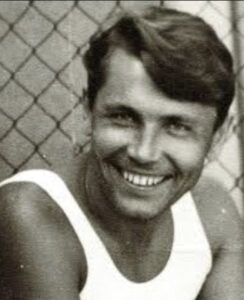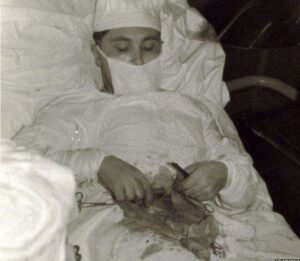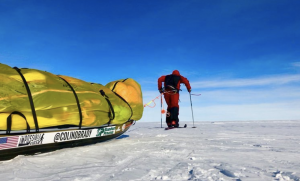antartica

 Over the centuries, there have been many exploratory expeditions all over the world. Some were privately financed, while others were financed by groups, governments, kings and as in the case of the 1955 to 1958 expedition to Antartica, the Commonwealth of England. The Commonwealth Trans-Antarctic Expedition (CTAE) was an expedition that successfully completed the first overland crossing of Antarctica, by way of the South Pole. It was also the first expedition to reach the South Pole overland for 46 years. t was preceded only by Amundsen’s expedition and Scott’s expedition in 1911 and 1912. Antartica is a fierce, snow and ice covered, wilderness, which makes me wonder why anyone would want to be on an expedition there. Nevertheless, I suppose that it’s the adventure of it that attracts so many to attempts it.
Over the centuries, there have been many exploratory expeditions all over the world. Some were privately financed, while others were financed by groups, governments, kings and as in the case of the 1955 to 1958 expedition to Antartica, the Commonwealth of England. The Commonwealth Trans-Antarctic Expedition (CTAE) was an expedition that successfully completed the first overland crossing of Antarctica, by way of the South Pole. It was also the first expedition to reach the South Pole overland for 46 years. t was preceded only by Amundsen’s expedition and Scott’s expedition in 1911 and 1912. Antartica is a fierce, snow and ice covered, wilderness, which makes me wonder why anyone would want to be on an expedition there. Nevertheless, I suppose that it’s the adventure of it that attracts so many to attempts it.
Traditionally, polar expeditions of the Heroic Age of Antarctic Exploration were private ventures, and the CTAE was no exception, even though it was supported by the governments of the United Kingdom, New Zealand, United States, Australia and South Africa, as well as many corporate and individual donations, under the patronage of Queen Elizabeth II. The expedition was headed by British explorer Vivian Fuchs and included New Zealander Sir Edmund Hillary. The group from New Zealand included scientists who were participating in International Geophysical Year research while the British team were separately based at Halley Bay.
Fuchs took the Danish Polar vessel, Magga Dan and went for additional supplied, returning in December 1956. The southern summer of 1956–1957 was spent consolidating Shackleton Base and establishing the smaller South Ice Base, located about 300 miles inland to the south. The winter of 1957 found Fuchs at Shackleton Base. Then, finally, he set out on the transcontinental journey in November 1957. The twelve-man team traveled in six vehicles, three Sno-Cats, two Weasel tractors, and one specially adapted Muskeg tractor. While they traveled, the team was also tasked with carrying out scientific research including seismic soundings and  gravimetric readings. This was, after all a scientific expedition.
gravimetric readings. This was, after all a scientific expedition.
Hillary’s team began setting up Scott Base. This was going to be the final destination for Fuchs. It was located on the opposite side of the continent at McMurdo Sound on the Ross Sea. Using three converted Ferguson TE20 tractors and one Weasel, which had to be abandoned part-way, Hillary and his three men…Ron Balham, Peter Mulgrew, and Murray Ellis…were responsible for route-finding and laying a line of supply depots up the Skelton Glacier and across the Polar Plateau on towards the South Pole, for the use of Fuchs on the final leg of his journey. The remaining member of Hillary’s team carried out geological surveys around the Ross Sea and Victoria Land areas. The Hillary team was not originally supposed to travel as far as the South Pole, but when the supply depots were completed, Hillary saw the opportunity to beat the British and continued south, thereby reaching the Pole…where the US Amundsen–Scott South Pole Station had recently been established by air, on January 3, 1958. While he wasn’t supposed to go, Hillary’s party became the third team to reach the South Pole, preceded by Roald Amundsen in 1911 and Robert Falcon Scott in 1912. Hillary’s arrival also marked the first time that land vehicles had ever reached the Pole. It was a great historic moment.
Fuchs’ team finally reached the Pole from the opposite direction on January 19, 1958, where they met up with Hillary. From there, Fuchs continued overland, following the route that Hillary had forged to get to the South Pole. Then, Hillary flew back to Scott Base in a US plane. He would later rejoin Fuchs by plane for part of the remaining overland journey. The original overland party finally arrived at Scott Base on March 2, 1958, after having completed the historic crossing of 2,158 miles of previously unexplored snow and ice in 99 days. A few days later the expedition members left Antarctica on the on the New Zealand naval ship Endeavour, headed for New Zealand, with Captain Harry Kirkwood at the helm.
Although large quantities of supplies were hauled overland, many forms of resources were used in the expedition. Both parties were also equipped with light aircraft and made extensive use of air support for reconnaissance and supplies. US personnel working in Antartica at the time provided additional logistical help. Both parties also used dog teams for fieldwork trips and backup in case of failure of the mechanical transportation. The dogs were not taken all the way to the Pole. In December 1957 four men from the 
 expedition flew one of the planes…a de Havilland Canada DHC-3 Otter—on an 11-hour, 1,430-mile, non-stop trans-polar flight across the Antarctic continent from Shackleton Base by way of the Pole to Scott Base, following roughly by air the same route as Fuchs’ overland party. For his accomplishments, Fuchs was knighted. The second overland crossing of the continent did not occur until 1981, during the Transglobe Expedition led by Ranulph Fiennes.
expedition flew one of the planes…a de Havilland Canada DHC-3 Otter—on an 11-hour, 1,430-mile, non-stop trans-polar flight across the Antarctic continent from Shackleton Base by way of the Pole to Scott Base, following roughly by air the same route as Fuchs’ overland party. For his accomplishments, Fuchs was knighted. The second overland crossing of the continent did not occur until 1981, during the Transglobe Expedition led by Ranulph Fiennes.
 We have heard of people taking care of their medical needs before. Some have stitched themselves, and others have removed a bullet or other such object. Some have even performed surgery on themselves, although that sound a little bit like insanity to me. Nevertheless, if it comes down to perform surgery on yourself or die, I guess the logical choice would be to perform the surgery on yourself, if you had any idea what you were doing. A medic, Robert Kerr “Jock” McLaren, who was a veterinarian by trade, took out his own appendix during his service with the Second Australian Imperial Force, in order to save his own life. So, McLaren set about to remove his own appendix…in the jungle, with a pen knife, two spoons, and coconut fibers. That was an amazing thing, but it happened in 1944 and he even had no anesthetic. It is shocking, but he would not be the last one to do that.
We have heard of people taking care of their medical needs before. Some have stitched themselves, and others have removed a bullet or other such object. Some have even performed surgery on themselves, although that sound a little bit like insanity to me. Nevertheless, if it comes down to perform surgery on yourself or die, I guess the logical choice would be to perform the surgery on yourself, if you had any idea what you were doing. A medic, Robert Kerr “Jock” McLaren, who was a veterinarian by trade, took out his own appendix during his service with the Second Australian Imperial Force, in order to save his own life. So, McLaren set about to remove his own appendix…in the jungle, with a pen knife, two spoons, and coconut fibers. That was an amazing thing, but it happened in 1944 and he even had no anesthetic. It is shocking, but he would not be the last one to do that.
As research groups began spending time in Antartica, several have found that they have suddenly needed medical care and there was no one there to do it, but them. One female doctor had to perform a biopsy on herself, which while it was a serious situation, was not a procedure to the degree of an appendectomy. Then on April 30, 1961, Dr. Leonid Rogozov, who was a Soviet  surgeon, found himself stranded in Antarctica, and in need of an appendectomy. Dr Rogozov was a Soviet general practitioner. He took part in the sixth Soviet Antarctic Expedition in 1960–1961, and unfortunately for him, he was the only doctor stationed at the Novolazarevskaya Station at that time. While he was there, he developed appendicitis. It was not something that could wait, as it was a serious attack, so he had to perform the appendectomy on himself.
surgeon, found himself stranded in Antarctica, and in need of an appendectomy. Dr Rogozov was a Soviet general practitioner. He took part in the sixth Soviet Antarctic Expedition in 1960–1961, and unfortunately for him, he was the only doctor stationed at the Novolazarevskaya Station at that time. While he was there, he developed appendicitis. It was not something that could wait, as it was a serious attack, so he had to perform the appendectomy on himself.
The station was newly constructed, and the 12 men inside were cut off from the outside world by the polar winter by March of that year. When the polar winter sets in, planes and ships cannot get into the area, for any reason. The symptoms began on the morning of 29 April 1961. At first they were mild, with Rogozov experiencing general weakness, nausea, and moderate fever, but later pain in the lower right portion of the  abdomen started to become more severe. His symptoms were classic, and he knew that he had acute appendicitis. The British Medical Journal reported, “He knew that if he was to survive, he had to undergo an operation, but he was in the frontier conditions of a newly founded Antarctic colony on the brink of the polar night. Transportation was impossible. Flying was out of the question, because of the snowstorms. And there was one further problem: he was the only physician on the base.” Self surgery was his only solution.
abdomen started to become more severe. His symptoms were classic, and he knew that he had acute appendicitis. The British Medical Journal reported, “He knew that if he was to survive, he had to undergo an operation, but he was in the frontier conditions of a newly founded Antarctic colony on the brink of the polar night. Transportation was impossible. Flying was out of the question, because of the snowstorms. And there was one further problem: he was the only physician on the base.” Self surgery was his only solution.
Being a logical man, Rogozov wrote in his diary, “It seems that I have appendicitis. I am keeping quiet about it, even smiling. Why frighten my friends? Who could be of help? A polar explorer’s only encounter with medicine is likely to have been in a dentist’s chair.”
 The ends of the earth…basically the poles…not exactly the most inviting places to visit…much less to cross alone. Still, there are always people who set lofty goals for themselves, despite grave personal risk and hardship. One such man, Børge Ousland, who was born on May 31, 1962, is such a man. Ousland is a Norwegian polar explorer, photographer, and writer, who became the first person in the world to do a solo crossing of the Antarctic. And, that wasn’t his only great accomplishment. On May 4, 1990, Ousland and Erling Kagge became the first explorers ever to reach the North Pole unsupported That trip took them on a 58-day ski trek from Ellesmere Island in Canada, a distance of just over 497 miles.
The ends of the earth…basically the poles…not exactly the most inviting places to visit…much less to cross alone. Still, there are always people who set lofty goals for themselves, despite grave personal risk and hardship. One such man, Børge Ousland, who was born on May 31, 1962, is such a man. Ousland is a Norwegian polar explorer, photographer, and writer, who became the first person in the world to do a solo crossing of the Antarctic. And, that wasn’t his only great accomplishment. On May 4, 1990, Ousland and Erling Kagge became the first explorers ever to reach the North Pole unsupported That trip took them on a 58-day ski trek from Ellesmere Island in Canada, a distance of just over 497 miles.
No stranger to hard work, Ousland started his career as a Norwegian Navy Special Forces Officer with Marinejegerkommandoen. Then, he spent several years working as a deep sea diver for the oil industry in the North Sea. I guess that time would have prepared him for the conditions the men would face in a trek to the North Pole. They trip must have sparked something in Ousland, because in 1994, he made the  first solo and unsupported journey to the North Pole from Cape Arktichevsky in Russia. Most of us wouldn’t even go once, much less multiple times.
first solo and unsupported journey to the North Pole from Cape Arktichevsky in Russia. Most of us wouldn’t even go once, much less multiple times.
For Ousland, even that wasn’t enough. Between November 15, 1996 and January 17, 1997, Ousland became the first in the world to do an unsupported solo crossing of the Antarctic. In that trip, Ousland traveled 1,864 miles from the edge of the Ronne Ice Shelf to the edge of the Ross Ice Shelf…completely alone. Ousland skied the long journey, with kite assistance. He holds the record for the fastest unsupported journey to the South Pole…taking just 34 days.
On January 22, 2006, together with Mike Horn he began a journey to the North Pole in full Arctic night. The trip was successfully concluded on March 23, 2006. Then, in September 2010, Ousland’s team aboard “The Northern Passage” completed the circumnavigation of the North Pole. A Russian team aboard the “Peter I” achieved the same feat in that season. These were the first recorded instances of the circumnavigation of the  North Pole without an icebreaker. In December 2011, Ousland traversed Antarctica to the South Pole for the centennial celebration of the first expedition to reach the Pole.
North Pole without an icebreaker. In December 2011, Ousland traversed Antarctica to the South Pole for the centennial celebration of the first expedition to reach the Pole.
Ousland loved the “ends of the earth” so much that the next logical step was to be married at the North Pole, which he did in 2012. He and Hege Rogeberg tied the knot at the Geographic North Pole, having been flown in by helicopter with “20 or 30 people” to celebrate with them. The wedding was held according to Lutheran wedding custom, with a pastor, candles, and a cross made of skies. Børge was dressed in national Norwegian dress. The bride, Hege was dressed in a warm, long, white dress. The couple flew in from Longyearbyen, Svalbard to Barneo Ice Station where they boarded the Russian MI-8 helicopter to the North Pole. The proceedings lasted 30 minutes. After the ceremony champagne was served together with a colorful fireworks display. The adventurer and his wife now have three daughters…Max, Eva-Liv, and Ingebjorg.

